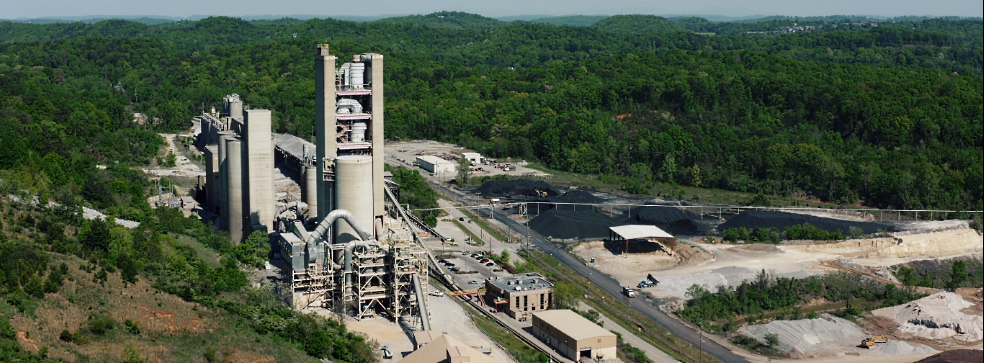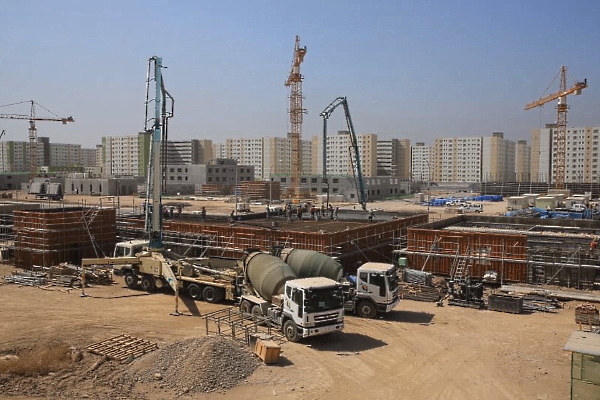To consider an application for financing, fill out the form and send it to us by e-mail along with the project brief, or contact our experts
Increasing pressure on companies to achieve EU climate goals would reduce the competitiveness of European cement plants and increase the import of cement products from countries that are not sufficiently concerned about CO2 emissions.
Concrete, the most in-demand construction material made from cement, aggregates and water, is actually the second most used substance in the world after water.
Ensuring the continuity of cement and concrete supplies is critical to meeting the goals of reducing emissions, developing renewable energy, sustainable housing and infrastructure, and public and private investment.
There is no alternative building material with similar properties that could replace cement and concrete.
In 2021, the European cement market was around 176 million tons with an expected CAGR of 1.9% in 2022-2027. However, the sudden war on the EU's eastern borders, sanctions and the gas crisis have put European economic growth under attack, while also hitting cement production.
This has further worsened the situation for cement plants, which are now spending huge sums to modernize production processes to meet climate targets.
The European Union is raising the bar for climate goals
Cement producers and investors from all over Europe are closely watching geopolitical events and economic changes in the EU, which may affect the development of the sector in the coming decade.The discussed Fit for 55 package will be of great importance for investment in the European cement industry.
It includes, in particular, changes to the European Emissions Trading System (EU ETS) and the Carbon Border Adjustment Mechanism (CBAM). Their format is of fundamental importance for the future competitiveness of cement production, the metallurgical sector and mineral fertilizer plants.
In first half of 2022, the ENVI Committee voted by 49 votes "for" and 33 "against" for faster implementation of the CBAM mechanism, which will come into force in Europe from January 1, 2023 with a transition period until the end of 2024. A carbon tax in all sectors covered by the European Emissions Trading Scheme will be introduced by 2030. In the same year, the EU will completely abandon free permits for CO2 emissions under the EU ETS.
According to some members of the European Parliament and industry experts, the majority in the committees have decided to raise climate goals more than the European Commission suggested, which could cause a significant financial burden for the cement industry.
While European cement producers generally support the introduction of the CBAM, they also call for a wider debate.
Experts express concern about the investment attractiveness and competitiveness of energy-intensive enterprises in Europe, especially large cement plants. The consequence of ill-conceived decisions may be the transfer of production outside the European Union. It should not be forgotten that the EU faced a number of problems that arose and continue after the outbreak of the pandemic and intensified after the start of the war in Ukraine.
The current CBAM mechanism combined with the EU ETS reform has a direct impact on industry competitiveness.
According to analysts, in 2021 the cost of purchasing CO2 emission allowances by the cement sector, for example, in Poland was approximately 180 million euros at a price of 60 euros per ton.
With the introduction of CBAM with the systematic withdrawal of free quotas in 2026, combined with a stable cement demand in Poland at 20 million tons per year and a CO2 price of 100 euros per ton, this means that the cement industry will require an additional over PLN 5 billion per year.
Huge costs in the current climate of uncertainty.
Given the unpredictability of the market, the free allowances under the EU ETS should not be phased out until CBAM has been tested and implemented in a manner that ensures its tightness and full compensation of CO2 costs.
The CBAM should take into account indirect costs of emissions, which are already very high for the cement industry and will soon be even higher due to the accelerated decarbonisation of the sector.

Investments in the cement industry are under threat
Despite implemented measures aimed at protecting the climate, managing CO2 emissions orrenewable energy sources and significantly reducing emissions across all sectors, the cement industry in the European Union is under increasing legislative pressure.The Fit to 55 standards and subsequent reduction targets call into question the competitiveness of this and other energy-intensive sectors.
The Global Cement and Concrete Association together with the European Cement Association, as well as a number of industry organizations uniting manufacturers of steel, fertilizers, glass, chemical and ceramic products, are paying attention to this problem.
Accelerated decarbonization of the cement industry will lead to a significant increase in demand for electricity, which already accounts for up to 35% of production costs. Over the years, the cement industry has been introducing CO2 management technologies, thanks to which its circulation of harmful substances in the production cycle becomes more and more closed, further reducing emissions into the atmosphere.
Innovative equipment is being installed in cement plants across Europe, but it requires significant investment.
The implementation of such investments will mean an increase in electricity consumption by up to 150%. Electricity costs, which have already increased by over 100% and are rising at an alarming rate, are playing a leading role in the decarbonisation of the cement manufacturing process.
In the European Union, cement plants meet an average of 46% of their heat needs with alternative fuels, replacing fossil fuels. In some countries, this indicator reaches 70-75%, but this is still not enough. The goal is to reach 90% and eventually completely eliminate fossil fuels from the cement production cycle.
However, this leads to a further increase in the consumption of electricity, the market of which is currently under tremendous pressure due to the gas crisis.
The high energy consumption of the cement sector is of key importance in terms of the regulations included in the Fit for 55 package and related to CBAM and European Emissions Trading System. Industry representatives emphasize that strict regulation puts the European cement industry at a disadvantage compared to, for example, cement plants from Belarus, which are not burdened by the costs of climate policy. This issue should be resolved by introducing a high duty on such products.
Investment in Europe'scement industry will be jeopardized if officials fail to strike a balance between climate goals and current economic realities.
This was illustrated, in particular, by the next records set on the CO2 market. In February 2022, their price reached 97 euros per ton. CO2 quotes have become the subject of speculation, hitting heavy industry and energy sector.
Do you need refinancing, a long-term investment loan or loan guarantees?
Difficult times require flexible solutions.
Contact Sedona Investments, an international company with experience in financing cement production projects in the EU and beyond.
We are ready to develop a customized financing scheme for your project depending on the goals and needs of the business.




